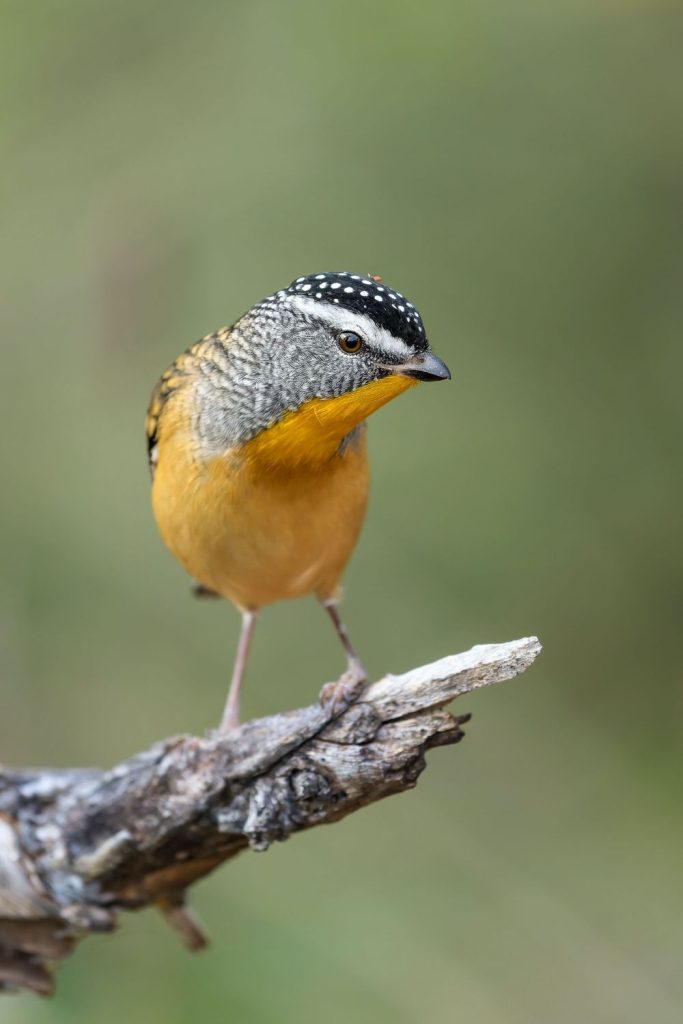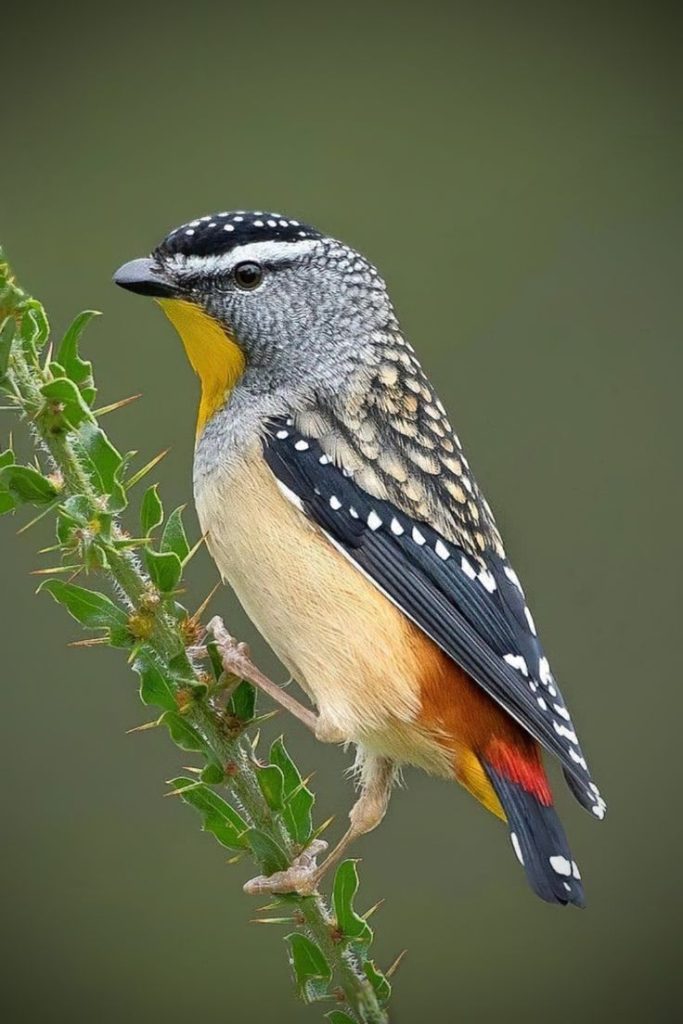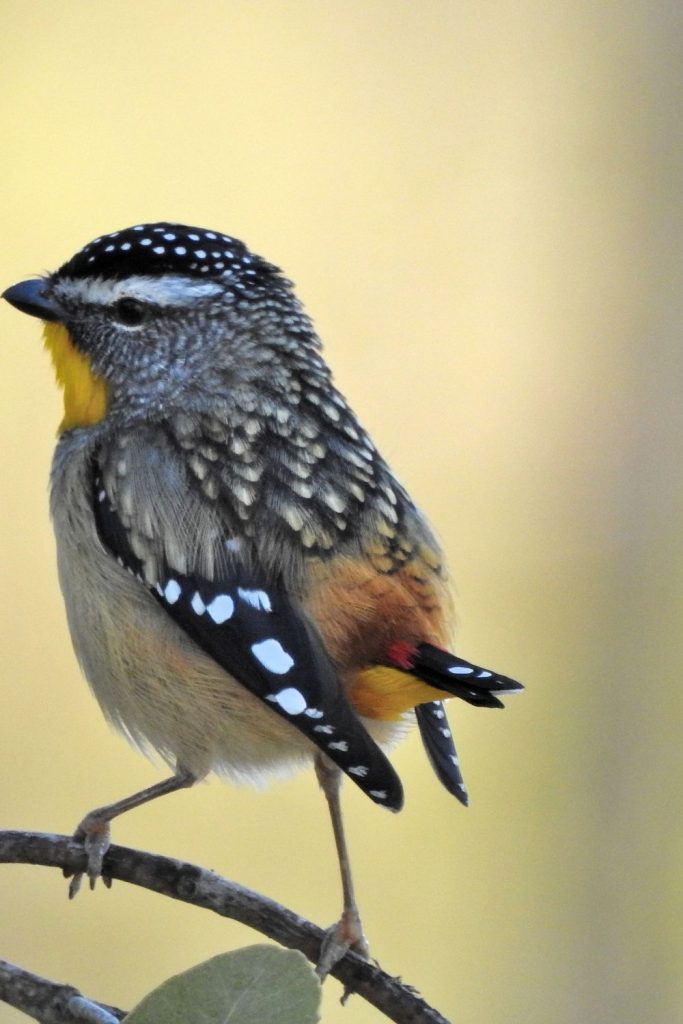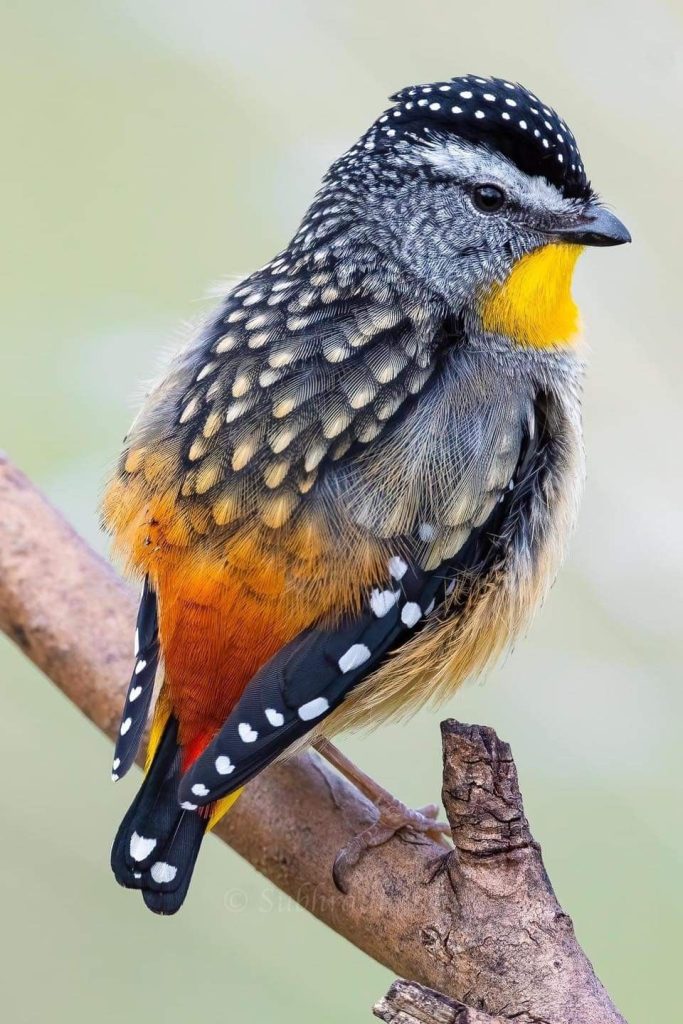Visual Identification
This week on Facebook, YouTube, and Twitter, we’re celebrating one of Australia’s most dazzling yet elusive birds — the Spotted Pardalote.
Often heard but rarely seen, these tiny birds are full of personality, color, and mystery.
Small But Stunning: Meet the Spotted Pardalote
Measuring only 9 to 10 cm long and weighing around 8 grams, the Spotted Pardalote is one of the smallest birds in Australia. Despite their size, they’re strikingly beautiful, especially the males.
male Spotted Pardalote is a colorful spectacle with a golden throat, scalloped black and white cheeks, a black crown dotted with white, and colorful wing spots that truly live up to the “spotted” name.
The females are slightly less vibrant. They sport cream-colored chins, yellowish head spots, and plainer cheeks. Juveniles look similar to females but are even more subdued in appearance.
Voices Louder Than Their Bodies
Though hard to spot among the dense canopy of eucalyptus forests, Spotted Pardalotes make their presence known through their loud, persistent calls. Their calls are sharp, rhythmic, and a staple soundtrack of the Australian bush — often so common you don’t realize they’re there until the sound stops.
Want to hear it? Check out these recordings:
A Quirky Nesting Habit
Surprisingly, for birds that feed in tree canopies, Spotted Pardalotes choose to nest in the ground.
They dig horizontal tunnels in earthen banks or soft ground to build their nests, which can be a risky strategy.
These burrows sometimes lead to close encounters with curious creatures like echidnas. You can see one of these unexpected meetings here: Watch the video
Where Do They Live?
Spotted Pardalotes live mainly along Australia’s temperate east, south, and west coasts, as well as in Tasmania. Their range extends as far north as Cooktown in Queensland, though they usually stick to mountain forests and eucalyptus woodlands.
They thrive in forests that have a rich eucalyptus canopy, as their food — tiny insects like psyllids and their sugary secretions called lerp — lives on the leaves.
Biologist Tim Low, in his book Where Song Began, even suggests that the birds’ white spots might mimic lerp clusters, helping them blend into their food source — an example of clever camouflage.
What’s in a Name? And a Spot Count?
Despite the name similarity, Spotted Pardalotes are not the same as Forty-spotted Pardalotes, which are rarer and only found in Tasmania. Interestingly, Spotted Pardalotes actually have more spots than their Forty-spotted cousins — with markings on their heads, wings, and tails. If we were being accurate, maybe they should be called Hundred-Spotted Pardalotes!
Learn more about the Forty-spotted Pardalote here: BirdLife Australia
Not the Only Pardalote in Town
Australia is home to four species of pardalotes:
-
Striated Pardalote: More striped than spotted, found throughout most of Australia except for the western deserts. More info
-
Red-browed Pardalote: Lives in the inland areas not occupied by Spotted Pardalotes. It’s a hybrid of sorts — with both stripes and spots. Read more
Each species has its own charm, but the Spotted Pardalote remains one of the most beloved for its vivid appearance and unmistakable call.




